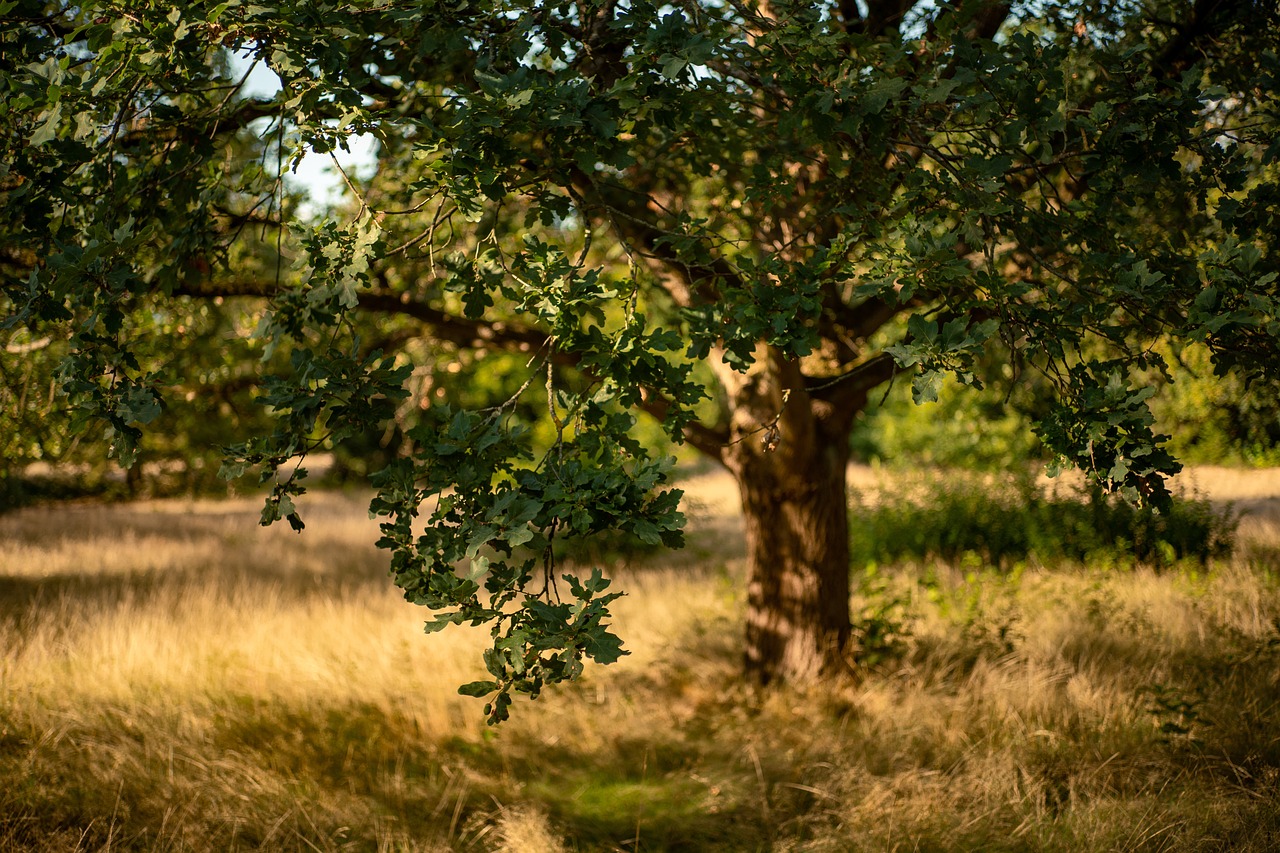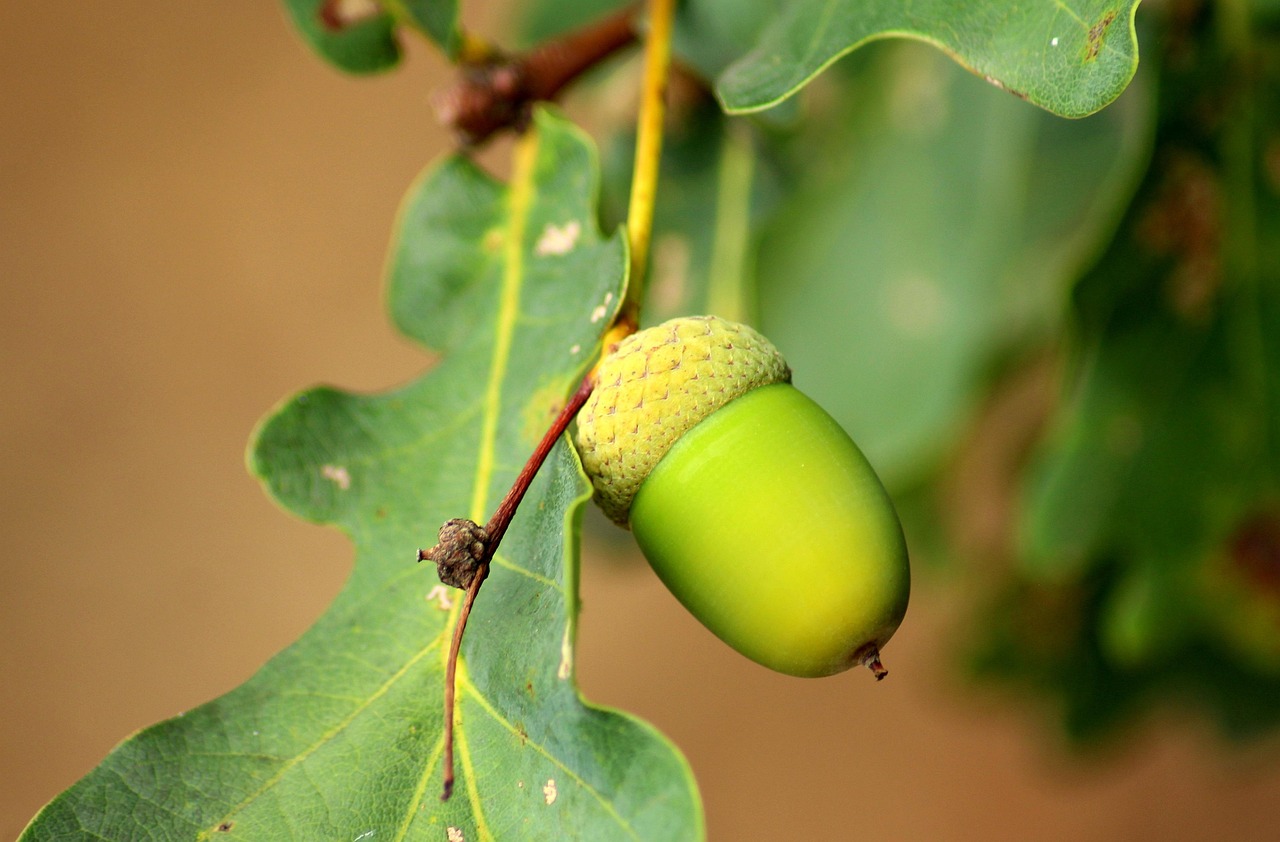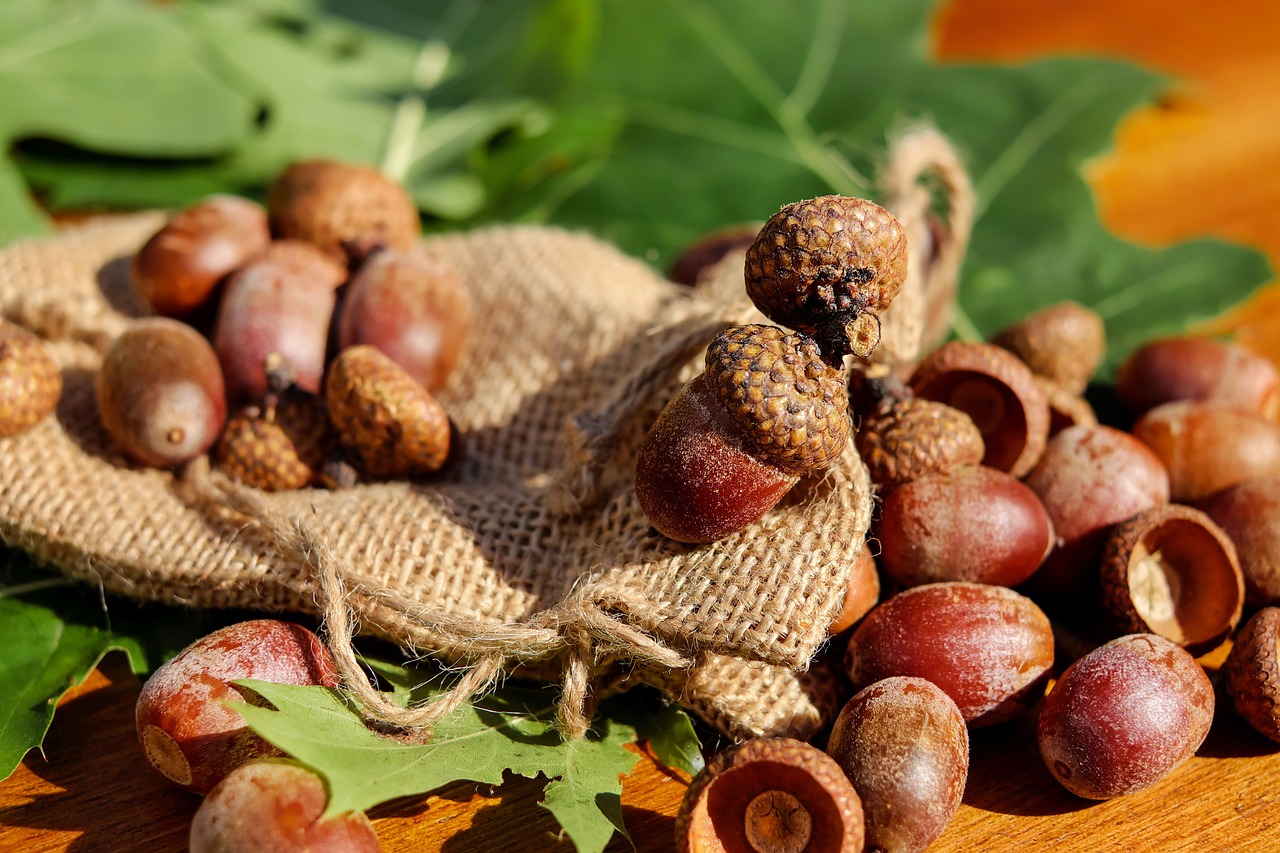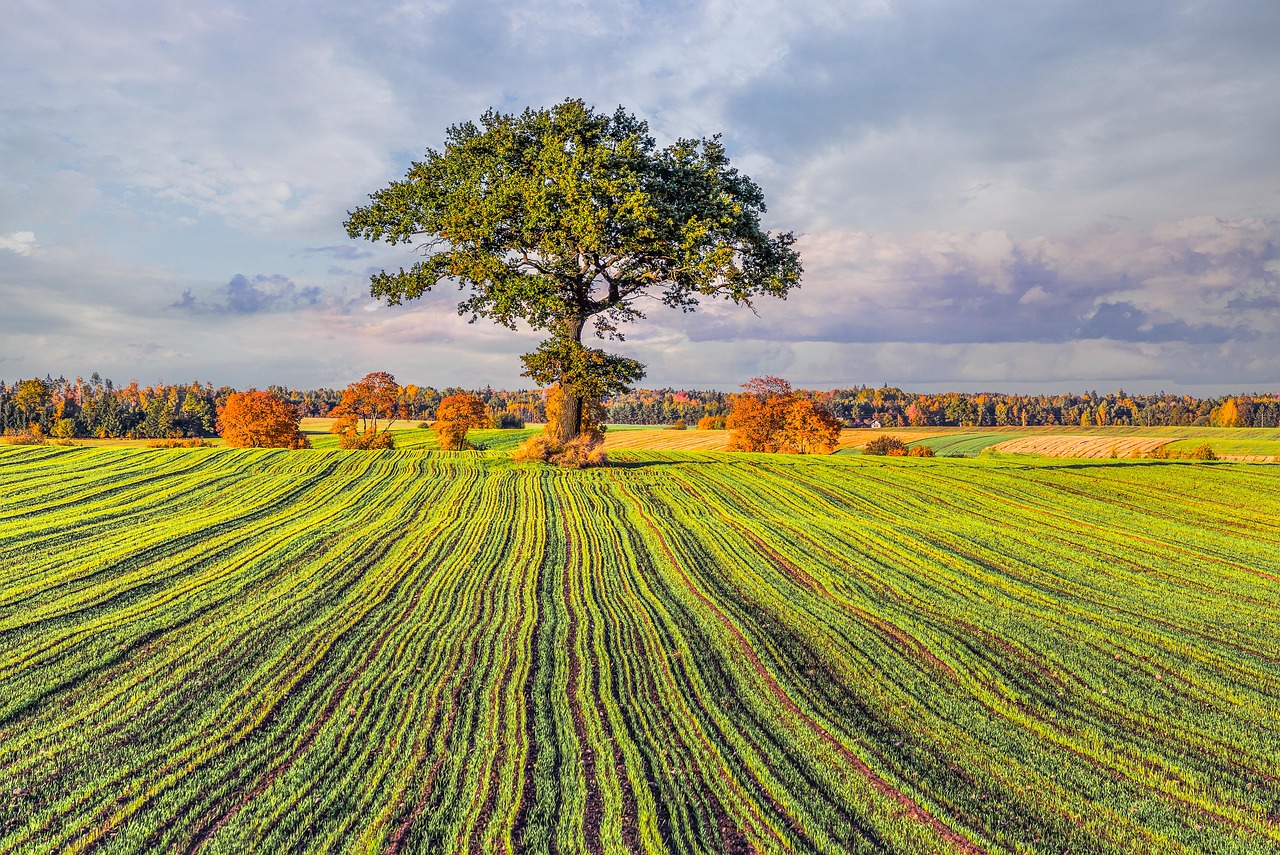White oak trees (Quercus alba) typically experience a moderate growth rate, averaging 1 to 2 feet per year in American forests under ideal conditions. Factors influencing their growth include soil quality, sunlight, and moisture availability. These trees can reach heights of 60 to 100 feet and live for several centuries, contributing significantly to forest ecosystems.
The white oak tree (Quercus alba) grows at a moderate rate, typically 1 to 2 feet per year in ideal conditions. Factors such as soil quality, moisture, and sunlight can influence its growth rate in American forests.
Understanding White Oak Trees
White oak trees are a prominent species in North American forests. They are valued for their strong wood and ecological contributions. These trees can live for several hundred years, making them a vital part of forest ecosystems. Their ability to thrive in various conditions contributes to their widespread presence across the eastern United States.

White oaks prefer well-drained soils and are commonly found in upland areas. They can grow in a range of habitats, from dry ridges to moist valleys. This adaptability allows them to flourish in diverse environments, contributing to their growth rate and overall health.
Growth Rate Factors
Several factors influence the growth rate of white oak trees. Understanding these factors can help in managing and conserving these important trees. Here are some key elements that affect their growth:
- Soil Quality: Rich, fertile soils promote faster growth. Poor or compacted soils can hinder development.
- Moisture Availability: Adequate rainfall and good drainage are crucial. Too much water can lead to root rot.
- Sunlight: White oaks thrive in full sun but can tolerate partial shade. More sunlight generally leads to better growth.
- Competition: Surrounding vegetation can impact growth. If competing plants are too dense, they may limit resources.
- Pests and Diseases: Infestations can weaken trees. Healthy trees grow faster than those affected by pests.
Growth Stages
White oak trees go through several stages of growth throughout their lives. Understanding these stages helps in assessing their growth rate and health:

- Seedling Stage: This is the initial phase where the tree establishes roots and begins to grow leaves.
- Juvenile Stage: During this phase, the tree grows rapidly. It focuses on height and root development.
- Mature Stage: White oaks reach maturity at around 20 to 30 years old. Growth slows but continues steadily.
- Old Age: After several decades, growth becomes very slow. Trees focus on survival rather than rapid growth.
Typical Growth Rate
The growth rate of white oak trees varies by region and environmental conditions. In optimal settings, these trees can achieve heights of over 80 feet and widths of 50 feet or more. The average height growth is about 1 to 2 feet per year during the first two decades of life. After this period, growth tends to slow significantly.
| Age (Years) | Average Height (Feet) | Growth Rate (Feet per Year) |
|---|---|---|
| 0-5 | 5-10 | 1-2 |
| 6-10 | 15-20 | 1-2 |
| 11-20 | 30-40 | 1-2 |
| 21-30 | 50-60 | 0.5-1 |
This table illustrates the average height and growth rate of white oak trees at different ages. As they mature, their growth slows, reflecting a common trend among many tree species.
The understanding of white oak tree growth rates is crucial for forest management and conservation efforts. By knowing how quickly these trees grow, forest managers can make better decisions about planting, thinning, and protecting these valuable resources.

Environmental Impact on Growth Rates
The growth rate of white oak trees is significantly influenced by environmental conditions. Various factors in the ecosystem can either enhance or inhibit their development. Understanding these environmental impacts is essential for promoting healthy growth and sustainability.
Soil Composition and Fertility
The type of soil where white oaks are planted plays a crucial role in their growth rates. Well-drained, fertile soils are ideal for these trees. Here are some key aspects of soil composition that affect growth:
- Nutrient Levels: Soil rich in nitrogen, phosphorus, and potassium promotes vigorous growth. These nutrients are vital for photosynthesis and overall tree health.
- pH Levels: White oaks prefer slightly acidic to neutral soils (pH 6.0 to 7.0). Soils outside this range can hinder nutrient uptake.
- Drainage: Well-draining soils prevent root rot and other diseases. Poor drainage can lead to stagnant water, which adversely affects root health.
Climate and Weather Patterns
The climate of the region where white oaks grow has a direct impact on their growth rates. Key climatic factors include:

- Temperature: White oaks thrive in temperate climates. Extreme temperatures, either too hot or too cold, can stunt growth.
- Precipitation: Adequate rainfall is essential for growth. Drought conditions can lead to stress and reduced height increase.
- Sunlight Exposure: Full sun exposure is ideal for white oaks. Insufficient sunlight can limit photosynthesis and slow growth.
Growth Rate Variability by Region
White oak trees exhibit different growth rates across various regions in America due to local environmental conditions. The following regions are notable for their distinct growth characteristics:
Eastern United States
The eastern part of the U.S. provides an ideal environment for white oaks. The combination of rich soils and moderate climate leads to robust growth rates. Here, trees can reach their maximum height within 30 years under optimal conditions.
Midwestern United States
In the Midwest, white oak trees experience slightly slower growth than in the East. Factors such as soil composition and seasonal climate variations result in differences. However, with proper care, these trees can still thrive and achieve significant heights over time.
Southeastern United States
The Southeast offers a warm climate with ample rainfall, which benefits white oak growth. However, high humidity levels can introduce fungal diseases, affecting overall health and growth rates. Regular monitoring is essential in this region.
Tree Management Practices
To optimize the growth rate of white oak trees, specific management practices should be implemented. These practices help create a more favorable environment for growth while addressing potential challenges.
- Site Selection: Choose a planting site with well-drained soil and adequate sunlight exposure.
- Soil Testing: Conduct soil tests to determine nutrient levels and pH balance. Amend the soil as necessary to promote healthy growth.
- Irrigation: Implement an irrigation system to ensure consistent moisture, especially during dry spells.
- Pest Control: Monitor for pests and diseases regularly. Use integrated pest management strategies to minimize damage.
- Thinning: If planted too closely, thinning may be necessary to reduce competition for resources among trees.
Future Outlook for White Oaks
The future of white oak trees in American forests is promising, but it requires careful management and conservation efforts. As awareness grows regarding climate change and its impacts on forests, proactive measures will be essential to ensure the longevity and health of these trees.
Research into breeding programs aims to develop disease-resistant varieties that maintain vigorous growth rates. Additionally, forest management practices focused on sustaining healthy ecosystems will contribute significantly to the survival of white oak populations across the country.
Ecological Importance of White Oak Trees
White oak trees play a vital role in their ecosystems. They offer numerous benefits not only to the environment but also to wildlife and human communities. Understanding their ecological significance helps underscore the need for their preservation.
Habitat for Wildlife
White oaks provide essential habitat and food for various species. They support a diverse array of wildlife, including:
- Birds: Many bird species, such as woodpeckers and blue jays, feed on acorns and use the tree for nesting.
- Mammals: Squirrels, deer, and other mammals rely on white oaks for food, particularly during the fall when acorns are abundant.
- Insects: The tree supports numerous insects, which serve as food for birds and other wildlife. Healthy insect populations contribute to the overall ecosystem.
Soil Health Improvement
White oak trees contribute to soil health in several ways. Their extensive root systems help stabilize the soil, preventing erosion and promoting water retention. Additionally, the leaf litter that falls during autumn enriches the soil as it decomposes, returning valuable nutrients.
Moreover, the presence of white oaks can enhance soil biodiversity. Various microorganisms thrive in their root zones, contributing to nutrient cycling and improving soil structure.
Economic Benefits of White Oak Trees
Beyond their ecological importance, white oak trees offer significant economic benefits. Their high-quality wood is sought after in various industries. Here are some of the ways white oaks contribute to the economy:
Lumber and Wood Products
The durable wood of white oak is prized for furniture making, flooring, and cabinetry. It is known for its strength and resistance to moisture, making it ideal for both indoor and outdoor applications. The economic impact includes:
- Job Creation: The timber industry associated with white oak supports thousands of jobs across the country.
- Local Economies: Harvesting and processing white oak contribute significantly to local economies in forested regions.
- Sustainable Practices: Sustainable forest management practices ensure that white oak harvesting continues without depleting resources, providing long-term economic benefits.
Tourism and Recreation
White oak trees also enhance recreational opportunities. Forests featuring these majestic trees attract visitors for hiking, bird-watching, and photography. The aesthetic value of these trees contributes to eco-tourism initiatives and local attractions.
Cultural Significance of White Oak Trees
Throughout history, white oak trees have held cultural significance in various communities. They often symbolize strength and endurance. Native American tribes utilized white oaks for numerous purposes, including:
- Food Source: The acorns were ground into flour or roasted for consumption.
- Medicinal Uses: Various parts of the tree were used in traditional medicine.
- Cultural Ceremonies: White oaks often featured in rituals and ceremonies, representing connection to nature.
Modern Cultural References
In contemporary society, white oaks continue to be celebrated in literature and art. Their majestic presence often represents resilience and stability in various narratives. Communities may even designate specific white oaks as landmarks due to their historical or aesthetic value.
Threats to White Oak Growth
Despite their numerous benefits, white oak trees face various threats that can impact their growth rates and overall health. Awareness of these threats is crucial for effective conservation efforts.
Pests and Diseases
White oaks are susceptible to several pests and diseases that can compromise their health. Some common threats include:
- Oak Wilt: A fungal disease that can kill trees rapidly if not managed properly.
- Gypsy Moths: These invasive pests can defoliate trees, weakening them over time.
- Aphids: While they are generally not fatal, large infestations can stress trees by sucking sap.
Climate Change Impacts
Climate change poses significant challenges for white oak growth. Rising temperatures, altered precipitation patterns, and extreme weather events can all affect their health. Trees may struggle to adapt to these rapid changes, impacting their growth rates.
Increased drought conditions can lead to stress and potential mortality in older trees. On the other hand, increased rainfall may contribute to root diseases if drainage is poor.
Addressing these threats requires ongoing research and community involvement to implement effective management strategies that protect white oak populations for future generations.
Conservation Efforts for White Oak Trees
To ensure the continued growth and health of white oak trees in American forests, various conservation efforts are underway. These initiatives aim to address the challenges posed by pests, diseases, and climate change while promoting sustainable management practices.
Reforestation and Afforestation
Reforestation involves replanting white oaks in areas where they have been depleted due to logging or disease. Afforestation refers to planting white oaks in areas that were not previously forested. Both practices contribute to increasing the population of white oaks in their native habitats.
- Community Involvement: Local communities often engage in tree planting events to raise awareness and promote environmental stewardship.
- Partnerships: Collaborations between government agencies, non-profit organizations, and private sectors enhance resources for planting initiatives.
- Educational Programs: Workshops and seminars educate the public about the importance of white oaks and how to care for them.
Research and Monitoring
Ongoing research plays a critical role in understanding the needs of white oak trees. Scientists study growth patterns, disease resistance, and climate adaptability to inform management practices. Key aspects of this research include:
- Genetic Studies: Research into the genetics of white oaks can help identify disease-resistant varieties that can thrive despite climate challenges.
- Pest Management Strategies: Developing integrated pest management practices helps mitigate the impact of invasive species on white oak trees.
- Long-Term Monitoring: Regular assessments of tree health and growth rates are essential to track changes over time and adapt management strategies accordingly.
Community Engagement and Education
Engaging the community in conservation efforts is crucial for the success of white oak preservation. Education fosters a sense of responsibility and connection to local ecosystems. Here are some effective strategies:
- School Programs: Incorporating forestry education into school curricula encourages children to appreciate and protect local trees.
- Volunteer Opportunities: Providing opportunities for individuals to participate in tree planting and maintenance fosters a sense of community involvement.
- Public Awareness Campaigns: Using social media and local events to raise awareness about the significance of white oaks can lead to greater public support for conservation initiatives.
Final Thoughts
The white oak tree is not only an integral part of America’s forests but also a symbol of resilience and strength. Understanding their growth rates, ecological importance, and the challenges they face is vital for ensuring their survival. Effective management practices, community engagement, and ongoing research are essential components in protecting these magnificent trees.
As we look toward the future, it is crucial to recognize the vital role that white oaks play in supporting biodiversity, enhancing soil health, and contributing to local economies. By prioritizing conservation efforts, we can safeguard these trees for generations to come, ensuring that they continue to thrive in American forests.
Ultimately, the success of white oak preservation lies in our collective responsibility to care for our natural environment. Through education, community involvement, and informed management practices, we can foster a healthier ecosystem that benefits both humanity and wildlife.
